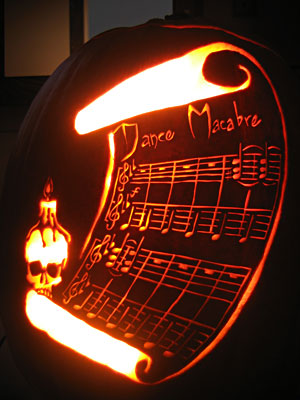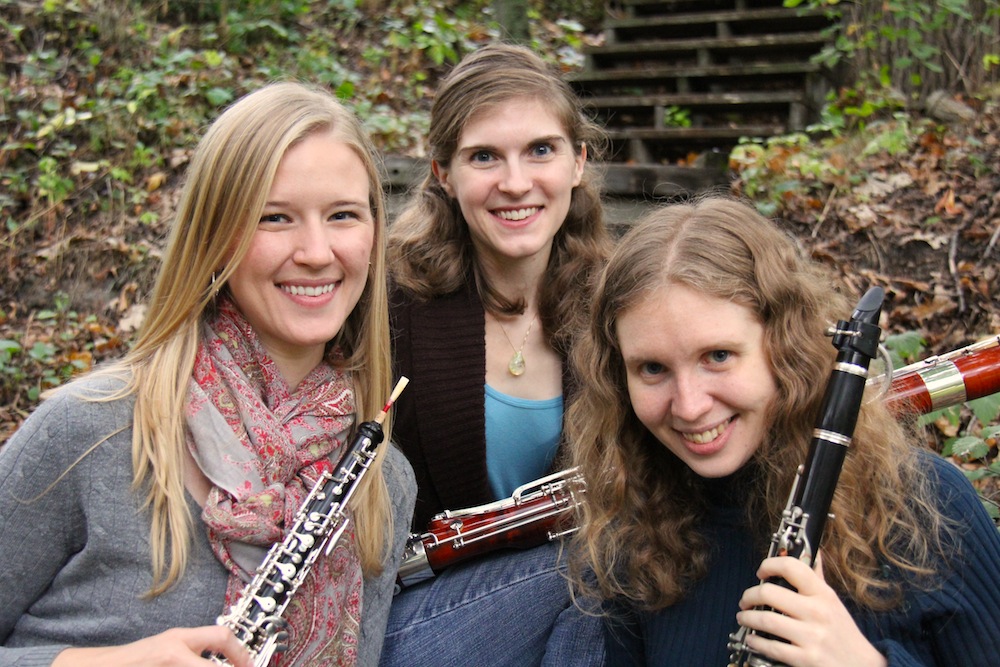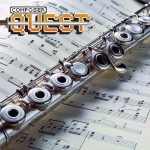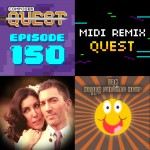I’m excited to announce our 11th Composer Quest Quest, brought to you by our woodwind friends, the Twin Cities Trio! You may remember them from such quests as Quest #1, in which my podcast listeners and I arranged some fun music for oboe, clarinet, and bassoon. Now, the trio is back to inspire you to write and/or arrange music for them on the theme of Halloween. You can either find an existing spooky song (Thriller, the Addams Family theme, etc.) or write one yourself. Send your oboe, clarinet, and bassoon music (PDFs and mp3 or MIDI) to twin.cities.trio@gmail.com on or before Friday, October 17th. You can submit more than one piece if you want. Take a listen to this announcement episode with Mary Beth Huttlin to learn more.
[audio:https://charliemccarron.com/mediaftp/composerquest/composer-quest-097-quest-11-halloween-reeds.mp3]Right click to download Ep. 97, or open in iTunes.
 The Twin Cities Trio will perform their favorite submissions at the Underground Music Cafe on Saturday, Nov 1st at 5pm (the day after Halloween), and if yours is chosen, you’ll also get a recording of it. There will also be a prize for the person who brings the best music-themed jack-o-lantern (please put a battery-powered candle in it instead of a real candle).
The Twin Cities Trio will perform their favorite submissions at the Underground Music Cafe on Saturday, Nov 1st at 5pm (the day after Halloween), and if yours is chosen, you’ll also get a recording of it. There will also be a prize for the person who brings the best music-themed jack-o-lantern (please put a battery-powered candle in it instead of a real candle).
Connect with the Twin Cities trio through YouTube, Facebook, Twitter, and Bandcamp. By the way, you might also remember Mary Beth from her Composer Quest episode and Maia Hamann from her episode.
Good luck! Below are some tips on composing for reed trio, plus some extended techniques that might help make your piece extra scary.
Subscribe to Composer Quest
Orchestration Tips
The Twin Cities Trio will gladly help you learn how to orchestrate parts for their instruments. Feel free to email them with any questions: twin.cities.trio@gmail.com.
General tips from clarinetist and composer Mary Beth Huttlin:
- Don’t feel like we all need play all of the time – it is okay (and, in fact, better) if different parts of piece have slightly different textures by using only 2 of the 3 voices.
- Don’t feel like you’re boxed in and the oboe has to have the melody, the clarinet the countermelody and the bassoon the accompaniment – it will help add variety to our program if that is NOT the case. (We can easily balance it.)
- It would be best to avoid multiphonics and more extreme 20th/21st century techniques.
Clarinet writing tips from Mary Beth:
- Let’s stick with writing for Bb clarinet.
- We can pretty easily play up to an octave higher than the A (A5) that
is one ledger line above the treble clef. (So this A would be A6 if
middle C is C4.) That said, for this type of transcription and with
these instruments, probably D above treble clef is a good outer
guideline. Otherwise, notes higher seem out of place in this
ensemble/type of music. - We can play down to the E below the third ledger line beneath the
treble clef staff (but Eb is not an option. )
) - Length of notes – not really a problem within reason
- The clarinet has a very wide dynamic range across its registers
Bassoon writing tips from Maia Hamann:
- Range: Bb below the bass clef to D on the second-to-top line of the treble clef. The E above that is reachable if stepped up to.
- Give me time to breathe.
- Don’t make it boring.
Oboe writing tips from Karen Tonneson:
- For the oboe I would say a comfortable range is middle C or D up to C or D that is 2 octaves higher (above the staff). I can play down to a B flat below middle C and all the way up to an F above the staff. The oboe doesn’t have a huge range.
- I can hold notes for a fairly long time…oboe demands it. I’m never too concerned about note length.
Extended Techniques
- Sing and play (playing notes below B4, singing notes A3-A4) –> Results in a “gravel-y sound”
- Bending notes (above E4) – interval of a 3rd or 4th, up or down (down is easier 🙂 )
- Air through instrument w/o reed –> results in air gushing sound that changes pitch slightly as fingers are moved rapidly
- Just mouthpiece and barrel –> results in an intense “note” – can shade pitch by using left hand to close/open end of barrel
- Key clicks –> really soft on a clarinet (with well-oiled keys 🙂 )
- Aleatoric sections are fine
- Key clicks –> also really soft
- Air through instrument (minus the reed)
- Crowing on just the reed
- Aleatoric sections are fine
Bassoon
- Key clicks
- Air through instrument (minus the reed)
- Crowing on just the reed
- Aleatoric sections are fine
- Multiphonics can be indicated if you’re okay with them being ambiguous tones (as a growling effect) rather than specific pitches (much more difficult)
For more woodwind extended techniques that are playable and effective, Maia recommends check out Miguel de Aguila’s Wind Quintet No. 2 (especially the second movement).





One comment